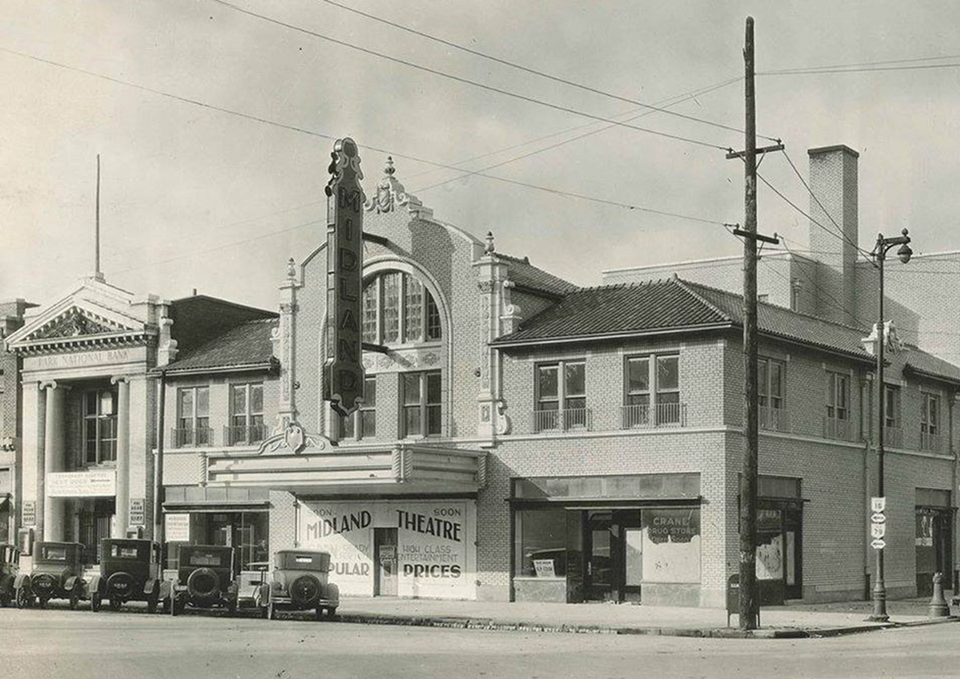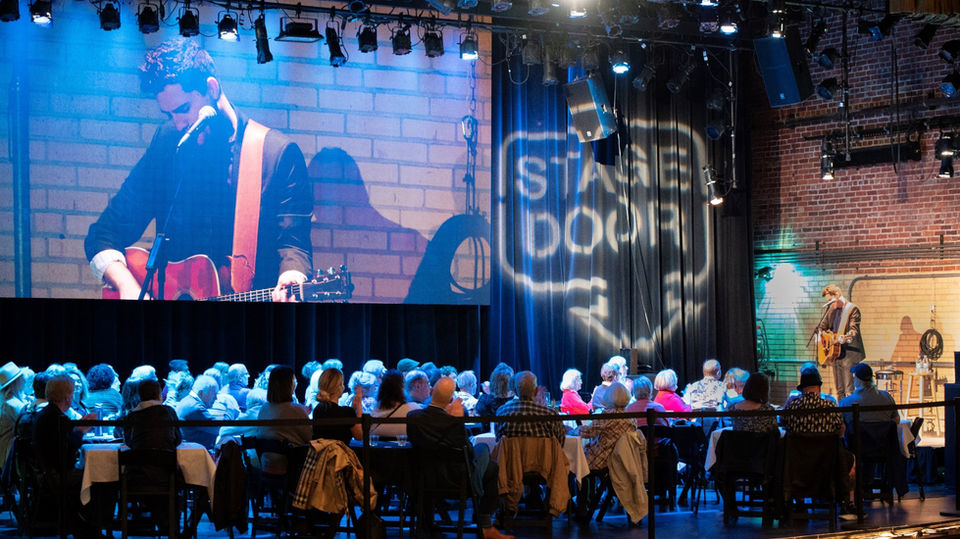
Our Story
For nearly 100 years, The Midland Theatre has been more than just a playhouse.
From our grand opening in 1928 through our stunning restoration and into today's "second golden age," we remain dedicated to bringing world-class entertainment, fostering community connections, and creating lasting memories in the heart of Licking County.
A Grand Opening in 1928
On December 20, 1928, The Midland Theatre opened its doors to an eager crowd in downtown Newark, Ohio. The town buzzed with excitement—hundreds lined North Park Place, some even paying others to hold their spot. That evening, house organist Helen D. Longfellow played “The Star-Spangled Banner” as the curtain lifted on a dazzling night of vaudeville acts and silent films.
From its debut, The Midland wowed patrons with its Spanish-inspired architecture, plush velvet seating, and a grand art glass chandelier that still stuns visitors today.


The Golden Era of Entertainment
For over 50 years, The Midland was Newark’s home for Hollywood’s biggest films. From Gone With the Wind to Dr. Zhivago, movies rotated every three days, offering something fresh each visit. And Saturday matinees? A rite of passage for local kids. Bikes lined the sidewalk while inside, Flash Gordon faced Ming the Merciless once more.
The Midland also brought live entertainment to town—welcoming stars like Bob Hope and Jerry Lewis, alongside vaudeville staples with names like “Noodles Fagan” and “The Famous Siamese Twins.”

A Dark Chapter: 1978–1992
In 1978, the theatre closed its doors. A frozen boiler during the infamous Blizzard of ’78 was the final blow. For 14 years, The Midland sat in silence—its architectural beauty faded, its future uncertain. Some called for demolition, but others still believed in its magic.

A Vision Restored
In 1992, Dave Longaberger and The Longaberger Company stepped in to save the theater. An $8.5 million renovation followed, restoring The Midland well beyond its original glory. Roofless and flooded when work began, crews scooped debris from the orchestra pit before reimagining the space for the next generation.
The project was gifted to The Newark Midland Theatre Association, a volunteer-run nonprofit devoted to its future.

A New Golden Age
Today, The Midland Theatre thrives as a modern performance venue with state-of-the-art sound and projection, while preserving its 1920s charm. It hosts everything from concerts and films to community events—continuing a legacy of entertainment nearly a century in the making.
The lights are back on. The curtain is up. And The Midland is once again the heart of Newark’s cultural life.











































































